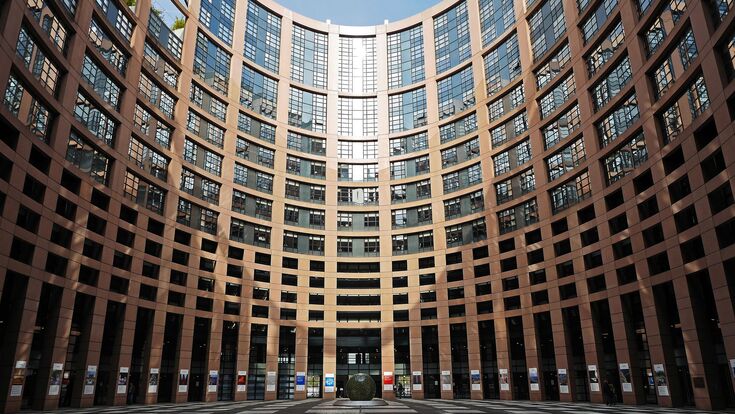EU Must Recognise ‘Necessary Role’ of Waste-to-Energy : COMMENT: European Suppliers of Waste-to-Energy Technology Secretary General

Taxonomy: Should facts guide the EU Commission and the European Parliament? What to do after recycling with residual waste? Patrick Clerens, ESWET Secretary General discusses the issues…
All waste handling must follow the waste hierarchy: Avoid, Reuse, Recycle, Recover, Dispose. But since some waste cannot or should not be recycled, Waste-to-Energy (WtE) is responsible for closing the “toxic loophole” of pollutant recycling. Who wants to recycle persistent organic pollutants (POPs) from some plastic waste into plastic toys? Who wants to turn arsenic that was used in wood-preservative (chromated copper arsenate) in a compost for food crops?
This is exactly what the Parliament will achieve if the role of waste to energy is not recognised as a necessary step to avoid spreading pollutants.
Let’s take a step back, why have we come to this point? In the context of the recent discussions in the European Parliament on the taxonomy (COM(2018) 353 final), with the aim to make investments more sustainable, Art. 9 promotes “the transition to a circular economy and waste prevention and recycling” by a.o. in point (i): “avoiding incineration and disposal of waste”. So recycling of POPs or arsenic, as mentioned above, contributes to recycling and is therefore to be encouraged by means of taxonomy!
What a strange logic does this entail? Should one not apply the well-defined waste hierarchy?
But the fun continues: Art. 12 defines as “significantly harming” the circular economy activities that lead to “significant increase in the generation, incineration or disposal of waste”. No link to the waste hierarchy again, meaning that energy recovery of residual waste or throwing it into a landfill will have the same incentive.
Maybe it is worth reminding that energy recovery from WtE plants saved 50 million tonnes of CO2 emissions in the last year Photo by Markus Spiske on Unsplash and that the WtE sector is now recognised to contribute to metal recycling in the waste framework directive.
So what to do with residual waste? Following the definition of Zero Waste Europe, an environmental NGO, residual waste is “waste that is not fit for prevention, re-use or recycling and needs to be sent to energy recovery or disposal”.
This residual waste consists of parts of the waste that are of poor quality (e.g. degraded material after several times of recycling), waste that is not suitable for recycling and is therefore rejected by recycling facilities (e.g. plastic wrap, paper contaminated with food), or polluted waste (e.g. painted or coated wood waste). There are two treatment options available for residual waste: either WtE, a recovery operation, or landfilling, a disposal operation.
Is residual waste something one can prohibit by law? Will it therefore vanish as it is seemingly an underlying assumption in the European Regional Development Fund (ERDF) and the Cohesion Fund (COM(2018) 372 final).
The Commission proposes in Article 6 (g) that “The [ ] fund shall not support investment in facilities for the treatment of residual waste”. It is anyone’s guess where the residual waste will end up if no facilities for the treatment of residual waste may be financially supported… And given the higher waste hierarchy position, and also the higher treatment costs of WtE compared to landfilling, my personal guess would be that the residual waste will be landfilled and left as a ticking time bomb for the next generations. Out of sight, out of mind. The kids of our kids will deal with our waste.
But the European Parliament, who compromised on this topic, is even more creative. Please remember that we address here the treatment of residual waste. So the European Parliament suggested to allow funding for “…state of the art recycling solutions, in line with […] the waste hierarchy”.
While this amendment is worth noticing for the mentioning of the waste hierarchy, it is not clear to me how residual waste (remember: not recyclable any more) should be treated by investing in a “recycling solution”. This amendment would only make sense if the sentence would read: “…state of the art recovery solutions, in line with […] the waste hierarchy”.
Only a proper understanding of how waste is managed on a daily basis, including an understanding of what “residual waste” and the “waste hierarchy” mean, will lead to the setting of reasonable conditions for the financing of residual waste treatment plants both in the ERDF and Cohesion Fund Regulation and in the Taxonomy Regulation.
As long as the pipe dream exists that all waste will be able to be recycled, meaning that there is no need to treat residual waste in an environmental and circular economy friendly way, such texts will unfortunately be part of our life.
That’s why we call on the realists in the European Commission and the European Parliament to keep in mind that residual waste cannot be outlawed, but can be reduced and treated safely by serious waste management practices.
Read More
CEWEP - Waste Incineration BREF: Don’t Forget Already High Standards
Three key industry bodies, including the Confederation of European Waste-to-Energy Plants, have offered their reaction to the first draft of the BREF for Waste Incineration.
Commission’s Focus on Decontamination of Materials
CEWEP has welcomed the Commission’s Communication on the interface between chemical, product and waste legislation.
Energy from Waste Conference a Hit in London
One of the key themes of the Energy from Waste Conference, held in London on the 27-28 February, was how the industry could better engage with the public in regards to both its critical role in society and its appeal as a career.

